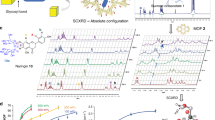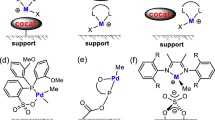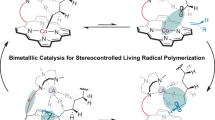Abstract
SURFACE catalysis and epitaxis are controlled by crystallographic factors. Molecules adsorbed on solid phase boundaries exhibit different physical chemical properties from the same molecules when present in a solution. In solid state conditions a lowering in activation energies is frequently observed and amino-acids may polymerize to peptides and proteins once they are attached on a solid surface. The mineral surface simply acts as a selective lattice.
This is a preview of subscription content, access via your institution
Access options
Subscribe to this journal
Receive 51 print issues and online access
$199.00 per year
only $3.90 per issue
Buy this article
- Purchase on Springer Link
- Instant access to full article PDF
Prices may be subject to local taxes which are calculated during checkout
Similar content being viewed by others
References
Degens, E. T., and Matheja, J., J. Brit. Interplanet. Soc., 21, 52 (1968).
Degens, E. T., and Matheja, J., Structure, Function and Origin of Nucleic Acids and Proteins (edit. by Oró, J., and Kimball, A. P.) (North-Holland, Amsterdam, 1970).
Degens, E. T., Spencer, D. W., and Parker, E. H., Comp. Biochem. Phys., 20, 553 (1967).
Author information
Authors and Affiliations
Rights and permissions
About this article
Cite this article
DEGENS, E., MATHEJA, J. & JACKSON, T. Template Catalysis: Asymmetric Polymerization of Amino-acids on Clay Minerals. Nature 227, 492–493 (1970). https://doi.org/10.1038/227492a0
Received:
Revised:
Issue Date:
DOI: https://doi.org/10.1038/227492a0
This article is cited by
-
Chirality and life
Origins of Life and Evolution of the Biosphere (1995)
-
The origin and amplification of biomolecular chirality
Origins of life and evolution of the biosphere (1991)
-
Clay and the origin of life
Origins of Life (1982)
-
Adsorption of amino acid entantiomers by Na-montmorillonite
Origins of Life (1981)
-
The radiolysis and radioracemization of amino acids on silica surfaces
Origins of Life (1981)
Comments
By submitting a comment you agree to abide by our Terms and Community Guidelines. If you find something abusive or that does not comply with our terms or guidelines please flag it as inappropriate.



